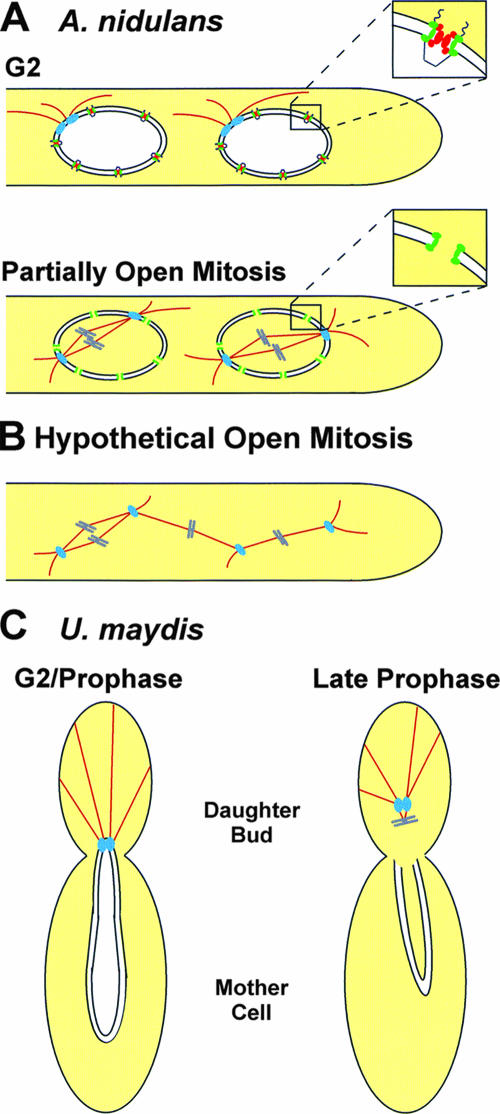FIG. 2.
Variant forms of mitosis change nuclear envelope permeability by different mechanisms. (A) Two A. nidulans nuclei in a common cytoplasm. During G2, the spindle pole bodies (blue) nucleate microtubules in the cytoplasm. The NPC is composed of core Nups (green) and FG-repeat Nups (red), which occupy the NPC central channel and restrict diffusion. Upon mitotic entry, FG-repeat Nups disperse from the central channel, allowing nuclear entry of tubulin and thus spindle formation. Insets show a magnification of a single NPC. Note that the nuclear envelope may prevent inappropriate microtubule connections between the spindle pole bodies and the chromosomes of the two nuclei which are in mitosis at the same time. (B) An illustration of the predicted outcome of an A. nidulans cell undergoing a hypothetical open mitosis. As mitosis is no longer enclosed by the nuclear envelope, microtubules can potentially connect to chromosomes from either nucleus. (C) Mitotic entry during the yeast-like budding phase of U. maydis. During late G2 and early prophase, microtubules pull the tip of the nucleus into the daughter bud in a dynein-dependent manner. Upon mitotic entry, the nuclear envelope breaks down near the spindle pole bodies, and the spindle begins to form in the daughter bud, while most of the nuclear envelope remains in the mother cell. This localized breakdown of the nuclear envelope may help facilitate nuclear envelope permeability. Based on the model depicted by Straube et al. (adapted from reference 47 with permission of the publisher).

